Mountain Rescue: The Basics
Being the focus of a mountain rescue operation is the stuff of nightmares for mountain enthusiasts. Therefore, it’s better to be overprepared than the other way around. Over the course of a lifetime of adventuring, you or your partners will likely require some kind of assistance getting out of the mountains.
There is no standardization within the world’s vast network of mountain rescue teams. Backcountry rescues can vary from a military operation—the U.S. Coast Guard, for example—to a team of volunteers on foot. Timeframes can range from minutes to days.
Mountain rescue doesn’t just refer to “emergencies.” The smallest of incidents can precipitate a rescue. In steep terrain, the slightest misstep and tweak of an ankle could mean waiting for a helicopter if you can’t climb down on your own.
This article will discuss a broad range of questions about mountain rescue: preparation, insurance, satellite phones, and more. We will also summarize the initiation process and what you can expect from a rescue in each of the world’s most popular mountaineering countries.
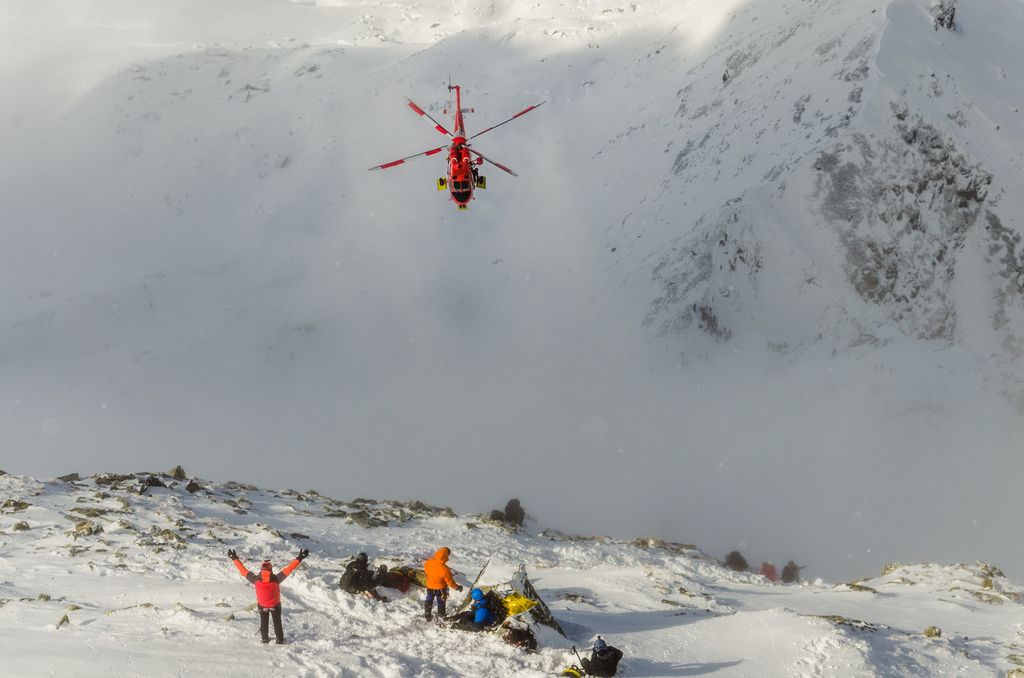
Being Prepared for Rescue
It’s essential to be prepared for the possibility of a rescue when in the mountains. That doesn’t mean you have to bring in the kitchen sink, though. Most people are not going to prepare for total self-rescue every time they go into the backcountry.
Here’s a basic checklist for the mountains. Nothing here is revolutionary. Even carrying everything won’t add more than a kilo or two to the pack.
- You obviously know to bring extra snacks and water (or a water filter—or even iodine).
- Tell others of your plans, especially if solo.
- We love electronic maps—the PeakVisor App, for instance—but if your phone battery dies or otherwise ceases to function…it could be a problem. Carry a backup paper map if you don’t know where you’re going.
PeakVisor let’s you print any trail in a matter of seconds. - Basic first aid kit.
- A headlamp should accompany any backcountry travel. It can turn a potential epic into a peaceful night stroll.
- In winter, an emergency bivy sack is a crucial piece of gear to help prevent hypothermia during a long wait during an injury or rescue. These bags are hyper-light (~100 grams), affordable (as low as 5 USD), and trap most (90%) of your body’s heat.
- A portable splint and tape are worth carrying in the first aid kit for more serious missions.
- It’s a personal choice, but some mountain guides say that the most crucial thing they have in their first aid kit is powerful pain medication. If an accident does happen, unbearable pain impairs decision-making…in addition to being unbearable. However, to prevent the possibility of an overdose, make sure somebody informs the emergency doctor that you’ve already had some medication.
- Once you’ve initiated an air rescue, the universal identification for an incoming helicopter is to have both arms splayed wide in a Y shape.
The last and most important item is a way to communicate with the outside world. In 2024, nearly everyone has a cell phone, but cell service is often nonexistent in the backcountry. As I mentioned in reference to the maps, phones can die or stop working. That’s why more and more people are carrying a separate satellite device.
Additionally, the latest iPhones (14, 15, and 16) have satellite messaging capabilities. Android users may be in luck with the Google Pixel 9 being projected to be the first with those capabilities. Users with these phones won’t have to pay additional money for a separate device unless they want the backup.
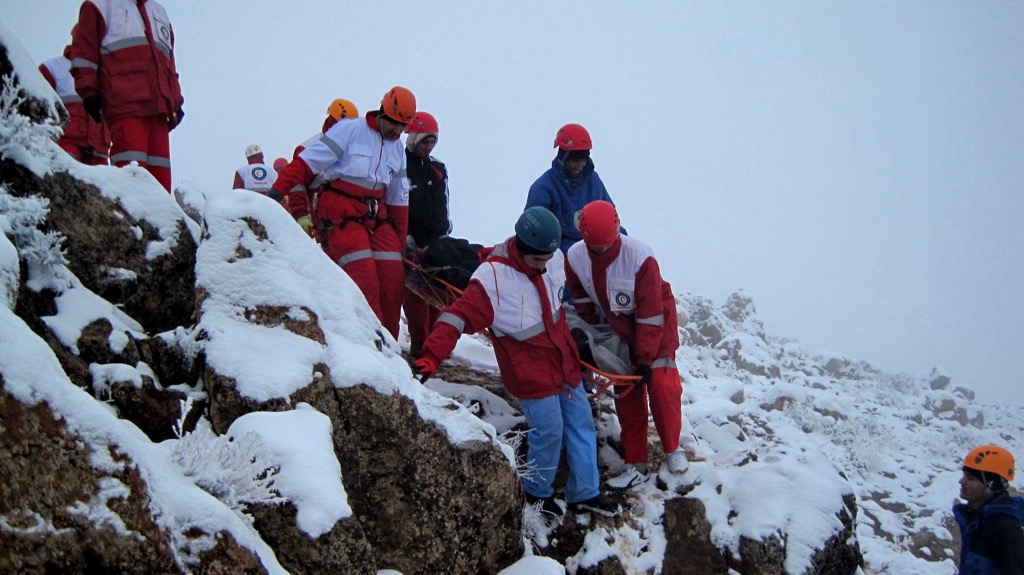
Using a Satellite Communication Device
Satellite communication devices are becoming more ubiquitous in the backcountry.
The only bad thing about them is that they are another seriously expansive thing to add to the gear list. Otherwise, one of these could save your life. You’ll be able to touch base with emergency rescue services if your phone doesn’t have service or isn’t working.
For the cheaper option, consider a Personal Locating Beacon (PLB). These are less expensive because they don’t require a costly subscription. However, you can only do one thing: send your location to a service that will initiate a mountain rescue to that location.
The more expensive option is a satellite communicator like the Garmin inReach. In addition to sending your location and initiating a rescue, you can send messages like “We’re going to be late, but everything is fine, so don’t worry.”
The most expensive option is buying a phone with satellite SMS capabilities. Currently, that means the iPhone 14, 15, or 16. Soon, Android users may be in luck with the Google Pixel 9 being projected to be the first with those capabilities as well. Nevertheless, you are looking at a steep price tag for any of those phones (toward 2000 USD for the upper end of the iPhone models).
The iPhone service is still limited in both availability and capability. There’s a lot of fine print on the matter; all the relevant information is on Apple’s website. First, the service is only available in a handful of developed countries, like the U.S., Japan, France, Australia, Switzerland, etc (users from these countries can still use the service worldwide). They mention that connecting to a satellite in the mountains and above 62° north or south latitude can be difficult. While the service is currently free for two years upon the purchase of an iPhone, Apple will likely charge for it in the future.
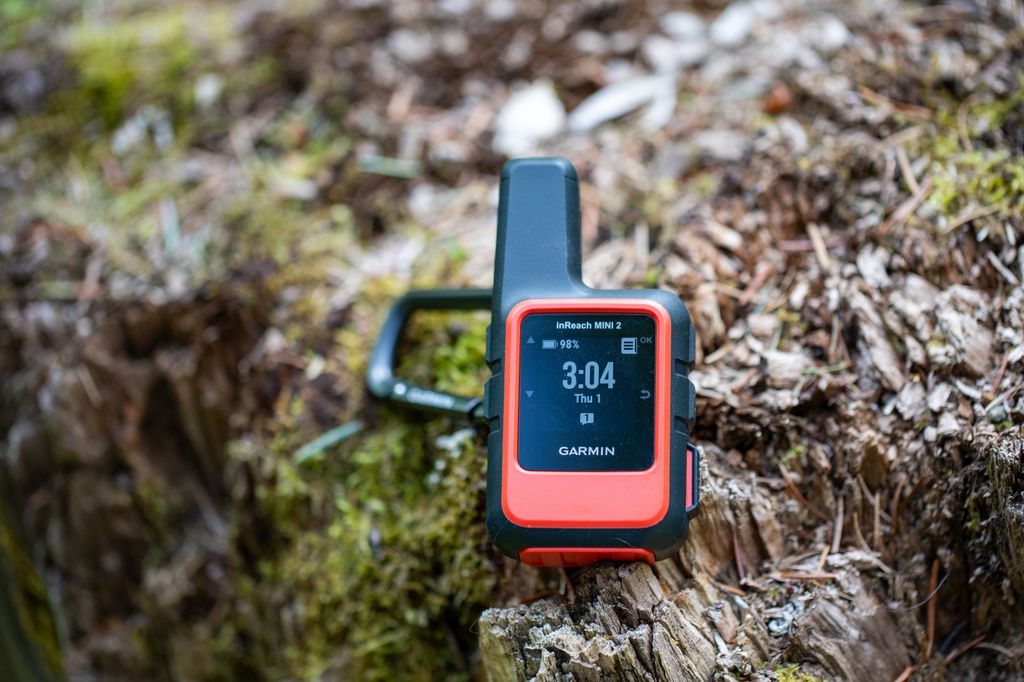
When to Contact a Rescue?
If your partner takes a spill and has a bone sticking out of their leg, you will want to get a mountain rescue immediately. We all know this already.
Other situations are less black and white. For example, if an un-forecasted storm is moving in, you might want to alert rescue services of your whereabouts so they can keep better tabs on you. Or perhaps you have a potentially ill climber who doesn’t need a rescue yet but may need one in the future.
Since rescues are dangerous for those who undertake them, exercising discretion about when you call for one is important. It’s for emergencies where one or more party members are in danger or cannot extricate themselves from the backcountry alone.
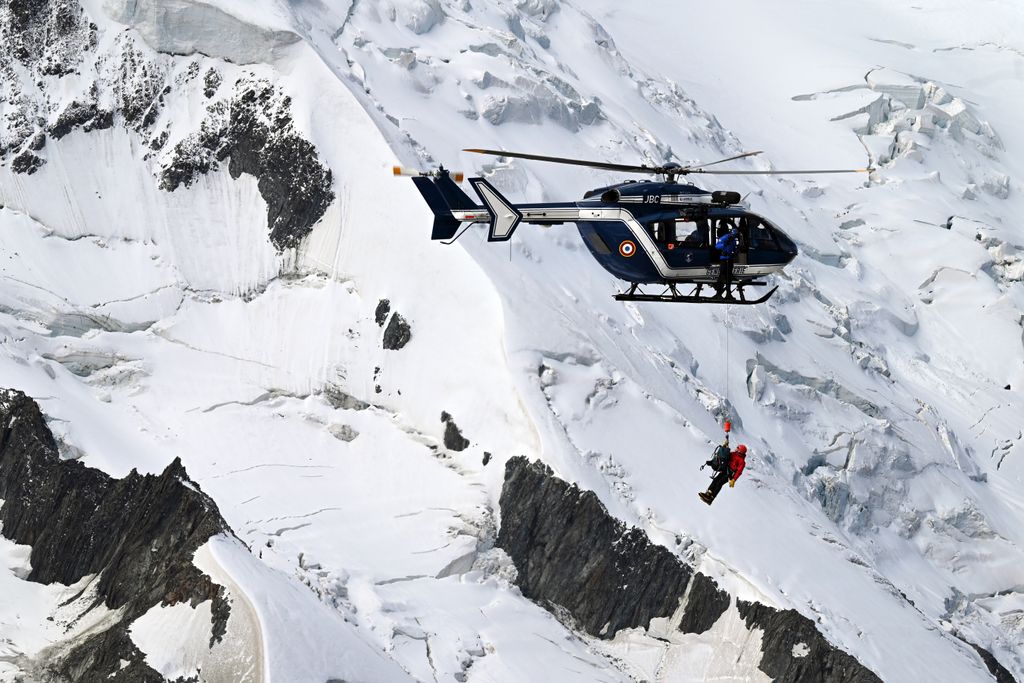
Insurance for Mountain Rescue
Backcountry rescues are often expensive.
Naturally, it varies from country to country, and it would be impossible to detail every place in this article. The lesson you should take away is that backcountry SAR response, helicopter rescue, and medical services may or may not be covered under your insurance, especially when traveling to another state or country.
One solution is to subscribe to your local Alpine Club. In Europe, Alpine clubs often cover the cost of a rescue. Examples include the CAI in Italy, SAC in Switzerland, and the DAV in Germany. Moreover, the Austrian Alpine Club (Alpenverein Österreich) covers rescues and some medical costs worldwide.
For those traveling around the world, these memberships can act as a supplement to your insurance. However, they aren’t enough on their own; Alpine clubs don’t cover other types of insurance, such as medical costs.
Fortunately, plenty of travel insurance plans cover injuries sustained during backcountry activities. Global Rescue, World Nomads, and Global Underwriters are three companies whose fine print includes backcountry travel (watch out for this because insurance companies will come after you if they find out you were injured while doing something they didn’t approve of).
For high-altitude climbers, finding insurance is even more difficult (and exponentially more expensive). Many insurance plans cover backcountry travel “up to 5000 meters” in the fine print. However, Global Rescue offers plans for high-altitude climbers (they also run various rescue operations in the Himalaya)
AXA Schengen offers travel insurance in Europe at an affordable rate.
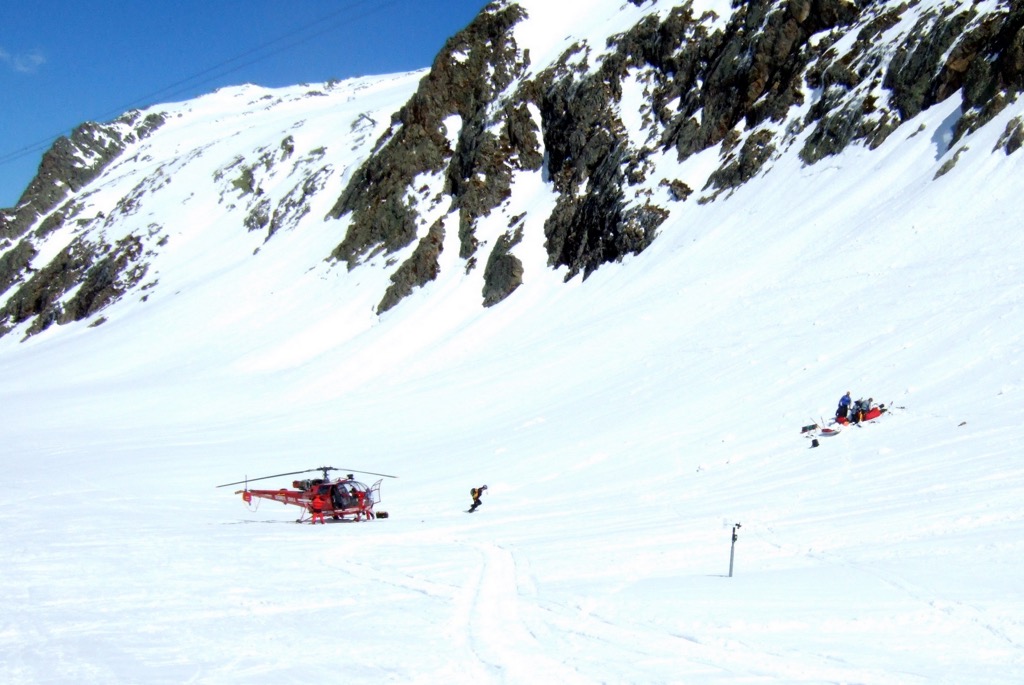
The Limits of Mountain Rescue
Even in our space age, powered by big tech and plenty of satellites, the infrastructure of mountain rescue is shaky. In many places, the mountains are too vast and un-trodden to establish an efficient rescue system.
The European Alps are home to one of the world’s best mountain rescue networks. In the Alps, helicopter rescue is often less than 15 minutes away, even if you’re up high on a glacier in the range’s remote corners. But this is unique.
Even in the U.S., a highly developed country with plenty of mountain enthusiasts, helicopter rescues can take several hours. Search and Rescue (SAR) teams are usually local and comprised of volunteers. Meanwhile, hospitals and private companies provide the helicopters when needed. Oftentimes, a local Search and Rescue team can arrive on foot far faster, tending to a patient until they can find a helicopter to come out. Unlike in the compact and well-traveled Alps, the U.S. is too large to maintain a dedicated national rescue operation. Foreigners should always have insurance because costs can balloon fast.
Rescues in other, less technologically developed countries can take even longer—in the realm of several days if conditions are not ideal.
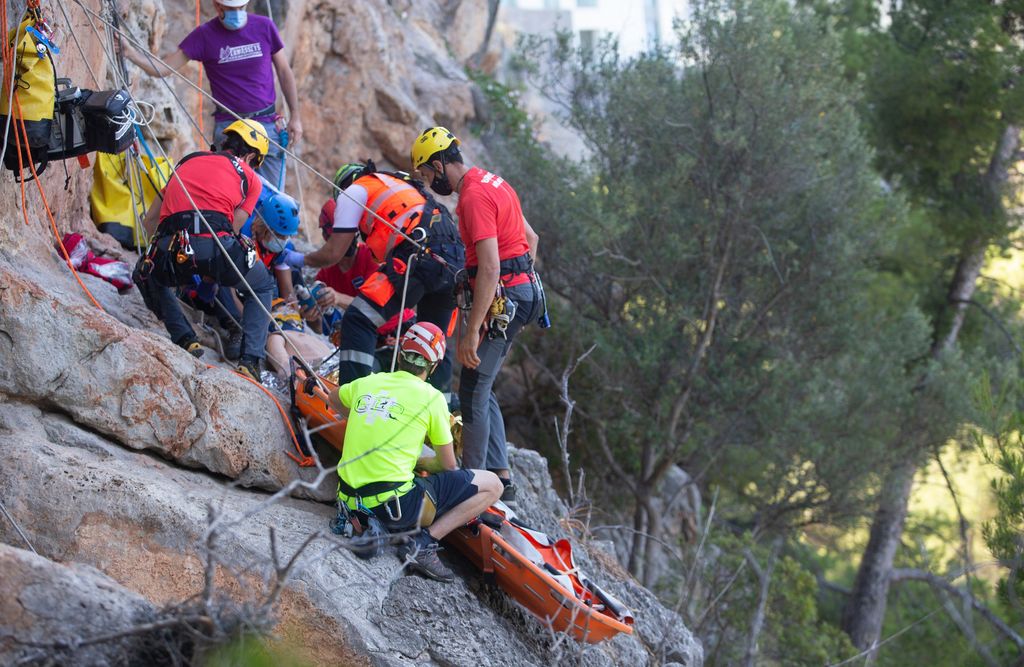
To learn more about one of the world’s top mountain rescue teams, check out this five-part YouTube Series. It follows the French PGHM around Chamonix and offers the best glimpse out there of the inner workings of high-tech mountain rescue.
Weather
We all know that the mountains are notorious for bad weather. Unfortunately, weather is often a cause of, and an impediment to, mountain rescue. Helicopters can’t fly if it’s seriously stormy. While pilots can navigate in clouds if they have to, it’s considered dangerous, especially with wind, freezing temperatures, and surrounding mountains.
High Mountain Rescue
Rescues get more complex the higher up you get. Much of this is due to the way helicopters behave at higher altitudes.
As mountain enthusiasts, we know there is less oxygen at higher elevations. However, the ratio of oxygen to other elements remains the same. It’s just that there is less atmospheric pressure, and the air is less dense. As the air becomes thinner, a helicopter’s rotors have a harder time generating lift. Most helicopters can’t get above 6000 meters (20,000 ft), even in ideal conditions.
Even if the choppers could fly that high, weather would be a concern. While weather in the mountains is unpredictable, weather above 6,000 meters actually achieves a level of predictability—it’s almost always heinous.
One of the reasons high alpine climbing is so dangerous is that injured climbers must be lowered by human power rather than machine. Above 7,000 meters (23,00 ft), even lucid thought is difficult. Bearing your own weight is a momentous task. Bearing the weight of another climber is, therefore, often impossible. Once a climber perishes, it’s extraordinarily difficult to remove the body. Hence, many popular high-altitude climbing routes are peppered with the frozen bodies of fallen climbers.
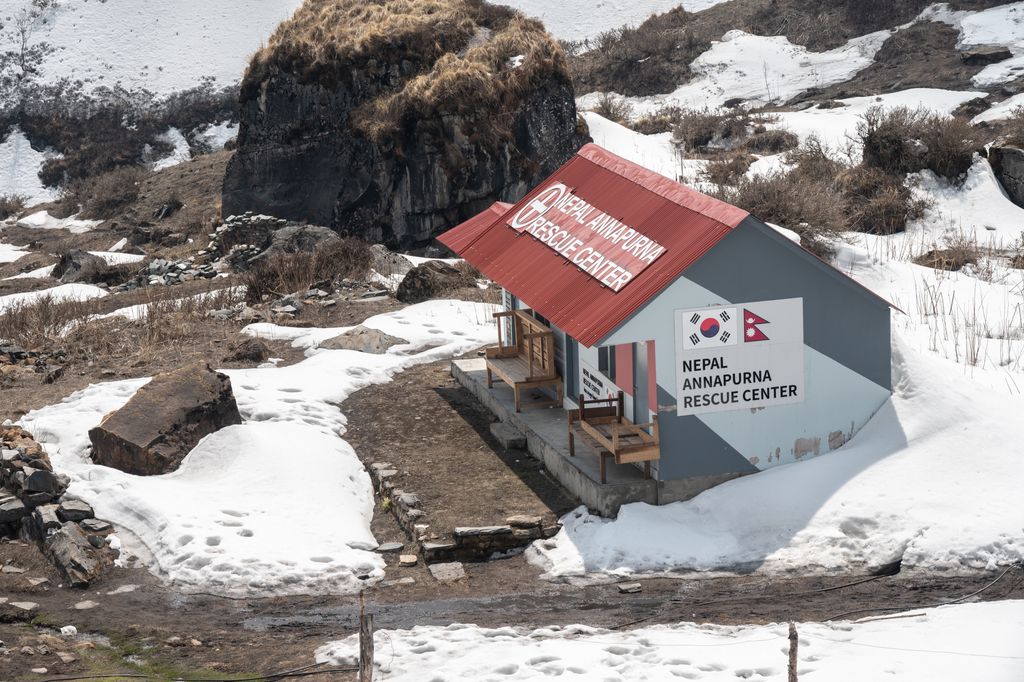
PeakVisor SOS Feature
The PeakVisor app is introducing a new SOS feature. Suppose you’re in the backcountry and have an emergency. In that case, all you have to do is tap the SOS tab to pull up the appropriate emergency number, your GPS location, and additional notes (like general cell coverage, language, etc.). Even with a satellite communicator like an inReach, it will be faster and more effective to call if you have cell phone service.
PeakVisor for Mountain Professionals
We’re now offering the PeakVisor app for free to mountain professionals!
The offer is valid if you are a full or part-time mountain professional, such as:
- A certified guide or instructor
- A search and rescue (SAR) member or patroller
- An avalanche forecaster or park ranger
- (If you volunteer at a SAR group, send us an email, and we can probably offer the deal to you as well, depending on your experience)
Subscription Offers
The subscription unlocks all of PeakVisor Pro’s features, such as Offline Maps, Advanced Route Planning, GPX Upload and Download, Real-Time Resort Status, Terrain analysis layers, including gradient, aspect, and elevation, and live weather updates and avalanche risk assessments.
Professional Recognition
- Certified Guide Badge: Display a special guide badge on your PeakVisor web profile, highlighting your professional status.
- Direct Links: Provide a direct link to your personal website or professional page, allowing potential clients to learn more about your services.
Send an email to peakvisor@routes.tips to apply.
Database
Below is our database for emergency numbers, along with additional notes. All this information will be available on the app. Take a look at this PDF for emergency information for every country in the world.
Always have insurance when playing in the mountains abroad.
In addition to having a way to contact emergency services, the ability to speak English is the second most important thing. You won’t be able to learn the native tongue of every country you travel to, but nearly all emergency operators in places with mountain tourism will either have working English or have someone nearby.
Mountain Rescue in the Americas
Mountain Rescue in the U.S.A.
Emergency Phone: 911
Cell Service: Spotty in the mountains. The U.S. is rural—not every valley has a village like in Europe.
Additional Details: English speaking, unlikely to speak any other languages. You need to have insurance—it’s possible that you could be billed thrice: SAS response, helicopter, and medical expenses at the hospital.
Mountain Rescue in Canada
Emergency Phone: 911
Cell Service: Very spotty in the mountains.
Additional Details: English speaking, unlikely to speak any other languages. The Eastern province of Quebec will speak both French and English.
https://parks.canada.ca/pn-np/mtn/securiteenmontagne-mountainsafety/programme-program/res-sar
Mountain Rescue in Argentina
Emergency Phone: 101 (police + ambulance)
Cell Service: Satellite phones only outside of the main parks and resorts.
Additional Details: Spanish speaking. The international trekking and climbing scene is fairly developed. The operator may speak English.
Mountain Rescue in Chile
Emergency Phone: 131 (police) 133 (ambulance)
Cell Service: Satellite phones only outside of the main parks and resorts.
Additional Details: Spanish speaking. The international trekking and climbing scene is fairly developed. The operator may speak English.
Mountain Rescue in Peru
Emergency Phone: 011 or 5114
Cell Service: Likely satellite phones only.
Additional Details: Spanish speaking. The international trekking and climbing scene is less developed. The operator may only speak Spanish.
Mountain Rescue in Ecuador
Emergency Phone: 101 (police) 131 (ambulance)
Cell Service: Likely satellite phones only.
Additional Details: Spanish speaking. The international trekking and climbing scene is less developed. The operator may only speak Spanish.
Mountain Rescue in Europe
Mountain Rescue in France
Emergency Phone: 112 (Europe standard)
Chamonix Rescue Coordination Centre (PGHM) with a SIM card from a non-French network operator or from abroad: 0033-450-53 16 89
Cell Service: Spotty, although you’ll often have service, especially around resorts, populated valleys, ridges, and peaks.
Additional Details: The operator will likely speak a bit of English. To hasten things up, ask for the PGHM or urgence de haute montagne, and the operator will transfer you there. The PGHM (Peloton Gendarmerie Haute Montagne) is one of the world’s finest rescue operations, along with Switzerland. In the Alps and Pyrenees, nearly all rescues are by air, often in less than 15 minutes.
https://www.pghm-chamonix.com/
Mountain Rescue in Switzerland
Emergency Phone: 112 (Europe standard)
Alpine Rescue Switzerland and Rega Air Rescue with SIM card from a Swiss network operator: 1414
With a SIM card from a non-Swiss network operator: 0041-333-333 333
Rescue organization KWRO for rescues in the canton of Valais: 144
The Rega app alerts the operations center with a swipe and automatically sends the position data.
Cell Service: Spotty, although you’ll often have service, especially around resorts, populated valleys, ridges, and peaks.
Additional Details: French, German, and English will all suffice. Switzerland, along with France, operates one of the world’s finest mountain rescue operations. A fleet of helicopters services the entire Swiss Alps, designed to reach any location in less than 15 minutes. Rescues are expensive, so have insurance if you’re in the Swiss Alps.
Mountain Rescue in Italy
Emergency Phone: 118 directs to national rescue service (Europe standard 112 also works, adds a step)
Cell Service: Spotty, although you’ll often have service, especially around resorts, populated valleys, ridges, and peaks.
Additional Details: Italian-speaking, likely to speak a bit of English.
Mountain Rescue in Austria
Emergency Phone: 140 (144 in Vorarlberg) for alpine emergencies (Europe standard 112 also works)
Cell Service: Spotty, although you’ll often have service, especially around resorts, populated valleys, ridges, and peaks.
Additional Details: German-speaking, likely to speak some English as well.
Mountain Rescue in Germany
Emergency Phone: 112 (Europe standard)
Cell Service: Spotty, although you’ll often have service, especially around resorts, populated valleys, ridges, and peaks.
Additional Details: German-speaking, will speak English as well.
https://www.drk.de/mitwirken/ehrenamt/die-bergwacht-ehrenamtlich-professionell/
Mountain Rescue in the U.K.
Emergency Phone: 999 (112 also works)
Cell Service: Spotty in the mountains.
Additional Details: English speaking, unlikely to speak any other languages. Mountain rescue response teams provide their service for free (though transport, like an ambulance or helicopter, may not be free).
https://www.mountain.rescue.org.uk/
Mountain Rescue in Norway
Emergency Phone: 112 (Europe standard)
Cell Service: Good in the south, poor heading north (where most of the mountains are).
Additional Details: Norwegian-speaking, will speak English as well.
Mountain Rescue in Sweden
Emergency Phone: 112 (Europe standard)
Cell Service: Good in the south, poor heading north (where most of the mountains are).
Additional Details: Swedish-speaking, will speak English as well.
https://www.fjallsakerhetsradet.se/en/about-us/
Mountain Rescue in Spain
Emergency Phone: 112 (Europe standard)
Cell Service: Spotty, although you’ll often have service, especially around resorts, populated valleys, ridges, and peaks.
Additional Details: Spanish-speaking, will speak English as well.
Mountain Rescue in Asia
Mountain Rescue in Japan
Emergency Phone: 110 (Police) 119 (Ambulance)
Cell Service: Excellent throughout the country, spotty in the higher mountains.
Additional Details: Japanese speaking. Japan is notoriously bad at English proficiency (87th globally), but the mountains are quite popular amongst Westerners.
Mountain Rescue in Taiwan
Emergency Phone: 110 (Police) 119 (Ambulance)
Cell Service: Excellent throughout the country, spotty in the higher mountains.
Additional Details: Mandarin Chinese speaking. About 29% of the population speaks English.
Mountain Rescue in the Philippines
Emergency Phone: 166 or 117
Cell Service: Likely satellite phones only in the mountains.
Additional Details: One of the world’s largest non-native English-speaking populations.
Mountain Rescue in India
Emergency Phone: 100 (Police) 102 (Ambulance)
Cell Service: Likely satellite phones only.
Additional Details: English is one of the national languages, so you should be able to communicate (although just 12% of Indians speak English). If you’re in the Himalaya, English will suffice due to the international nature of high-mountain trekking and climbing.
Mountain Rescue in Nepal
Emergency Phone: 100 (Police) 228094 (Ambulance)
Cell Service: Likely satellite phones only.
Additional Details: If you’re in the Himalaya, English will suffice due to the international nature of high mountain trekking and climbing. They’ve pulled off a number of high-profile rescues over the years.
https://www.himalayanrescue.org/
Mountain Rescue in Pakistan
Emergency Phone: 15 (Police) or 1122 (General rescue service)
Cell Service: Likely satellite phones only.
Additional Details: If you’re in the Himalaya, English will suffice due to the international nature of high mountain trekking and climbing. They’ve pulled off a number of high-profile rescues over the years, including one at over 20,000 feet (over 6,000 meters). The Pakistani Army performs these rescues.
Mountain Rescue in China
Emergency Phone: 110 (Police) 120 (Ambulance)
Cell Service: Likely satellite phones only.
Additional Details: If you’re in the Himalaya, English will suffice due to the international nature of high mountain trekking and climbing.
Mountain Rescue in Africa
Mountain Rescue in South Africa
Emergency Phone: 10111 (Police) 10177 (Ambulance)
Cell Service: Spotty.
Additional Details: English is one of 12 official languages.
https://mcsa.org.za/activities/mountain-rescue/
Mountain Rescue Down Under (Australia + NZ)
Mountain Rescue in Australia
Emergency Phone: 000
Cell Service: Spotty.
Additional Details: English only.
https://knowledge.aidr.org.au/resources/ajem-jan-2015-search-and-rescue-in-australia/
Mountain Rescue in New Zealand
Emergency Phone: 111
Cell Service: Spotty.
Additional Details: English only. https://www.landsar.org.nz/

